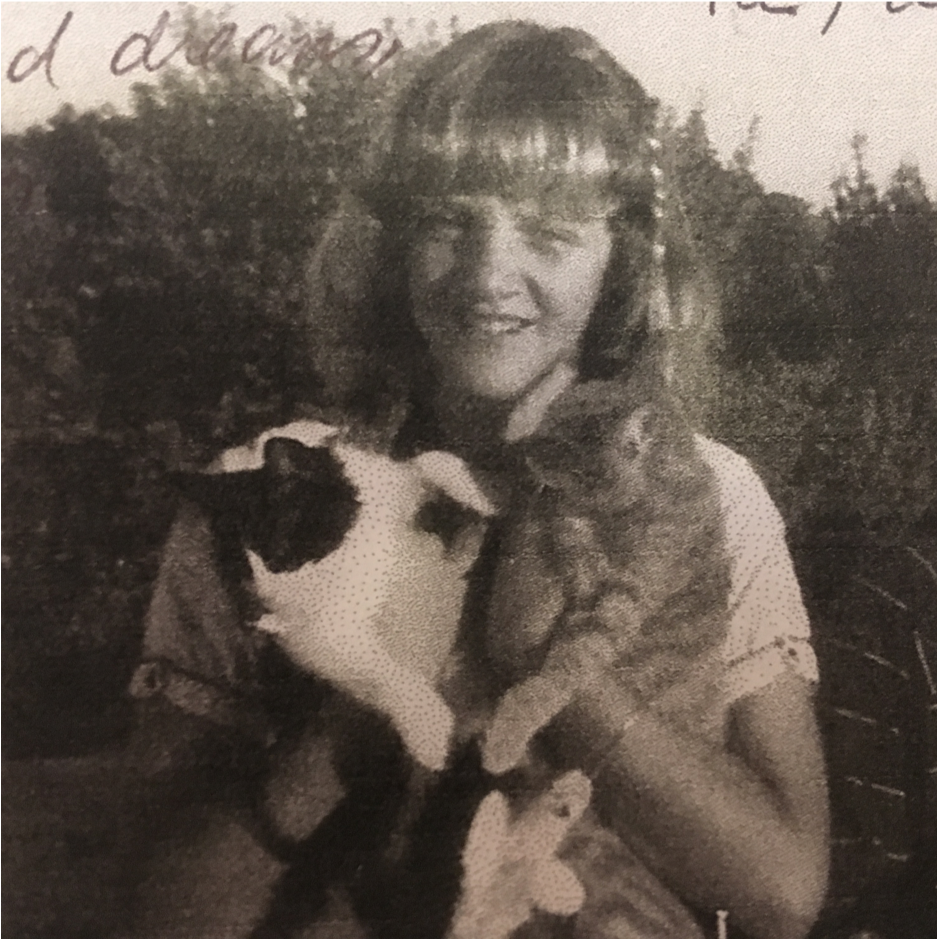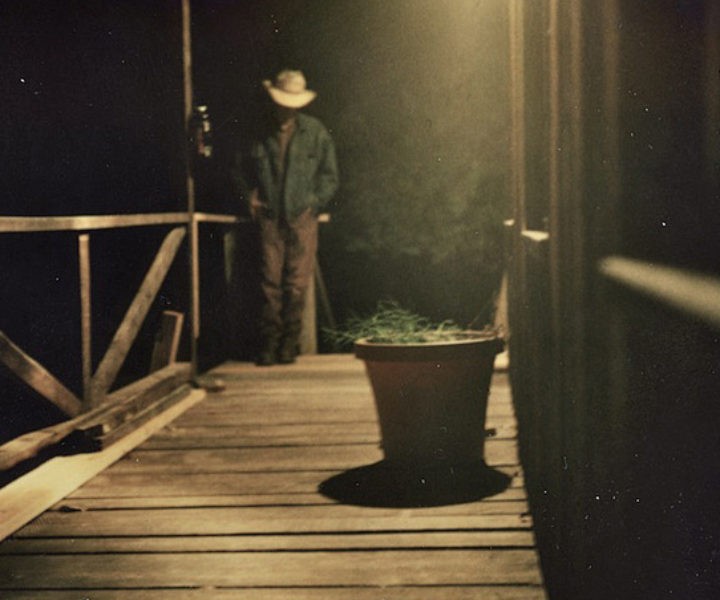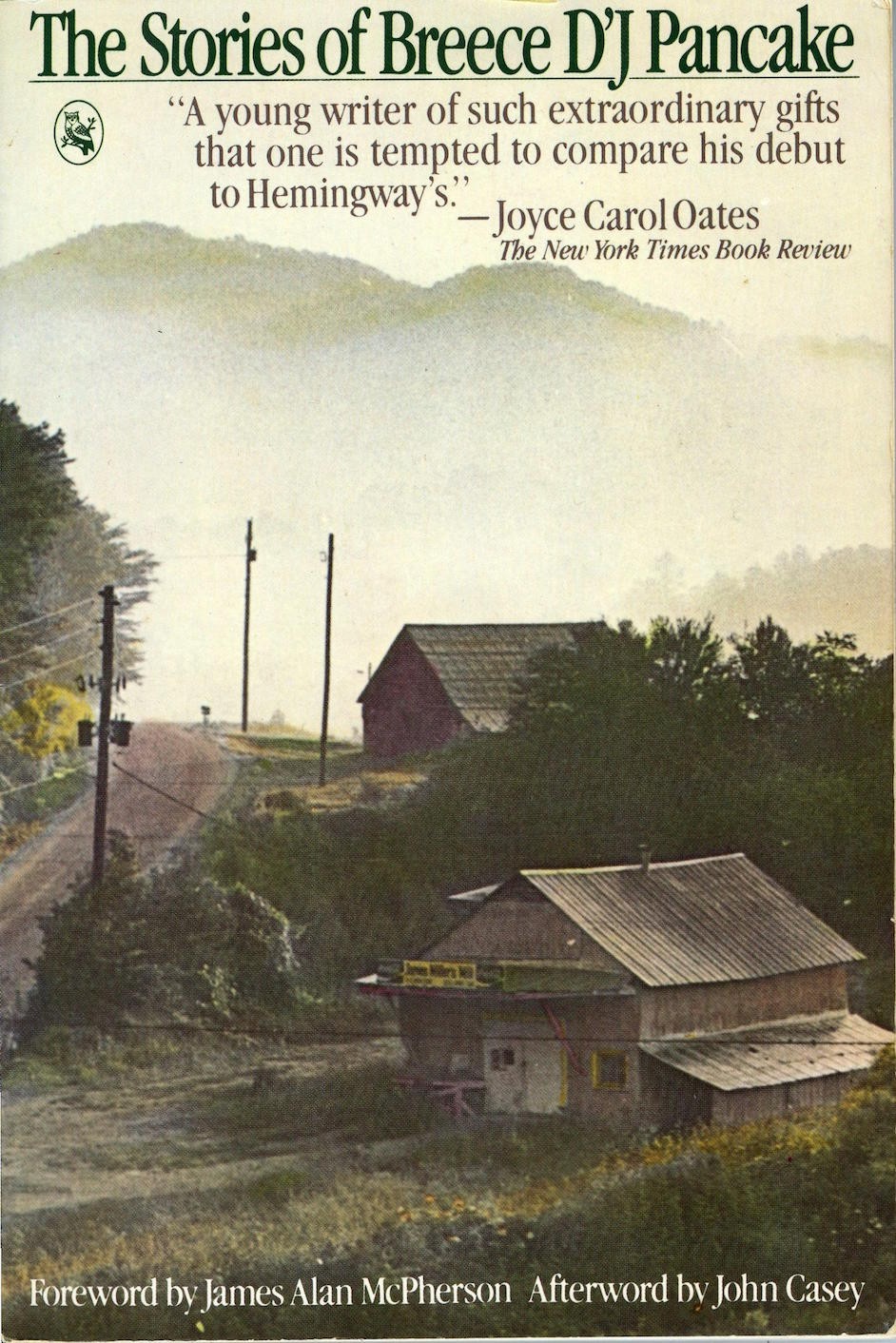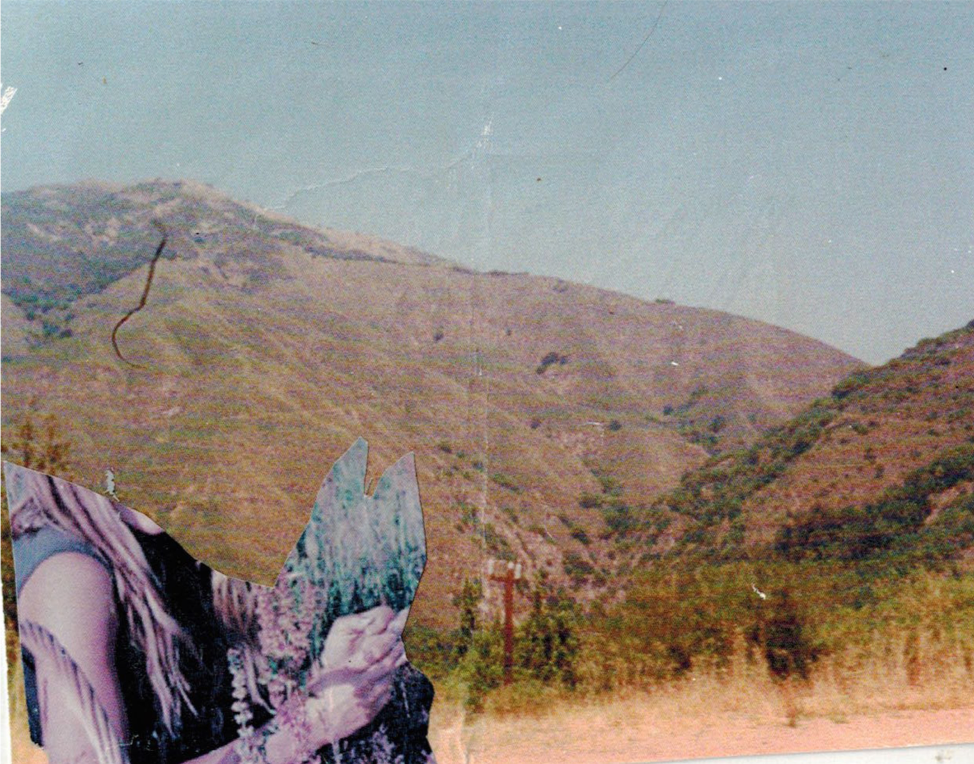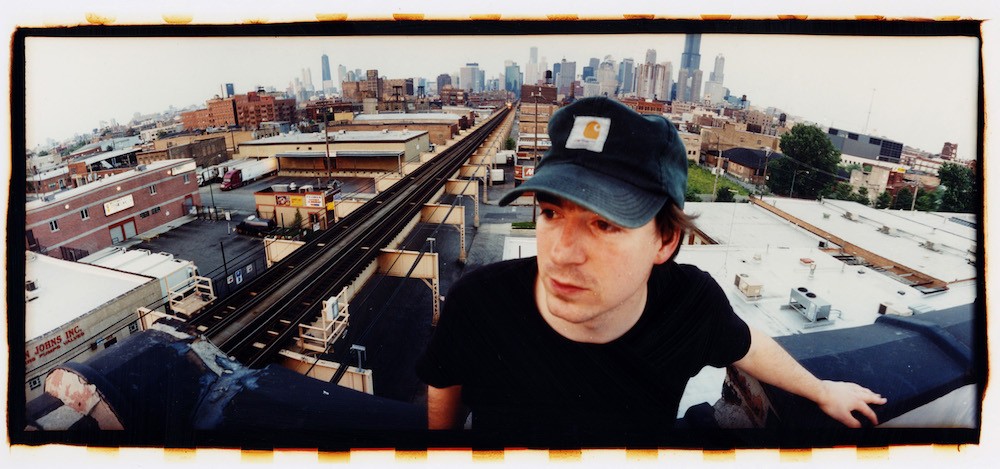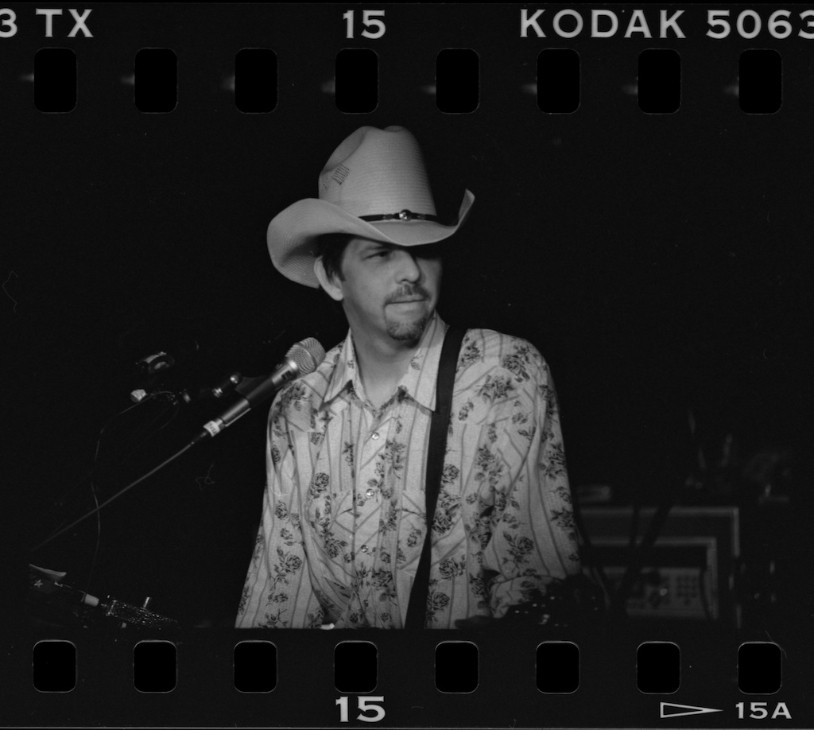
Blanket me sweet nurse
And keep me from burnin’
I must get back
To the woods dear girls
I must get back to the woods.
—Mark Linkous
In his seminal “Mourning and Melancholia,” Freud writes that mourning and melancholia share the same features: a “profoundly painful depression, a loss of interest in the outside world, the loss of the ability to love, the inhibition of any kind of performance.” In both melancholia and mourning, the sufferer grieves the loss of a loved object. The symptoms associated with mourning are the result of the mourner’s internal, psychic labor of releasing her attachment to the lost loved object in the process of grieving; once this mourning is complete, the mourner is freed from her binding to the lost object.
For the melancholic, however, these same symptoms result not from an internal process by which the melancholic releases her attachment to the lost love object but rather because of her internal struggle to hold onto that object. The melancholic doesn’t know what it is that she has lost in the loved object. If she does know, she does not know, as Freud points out, what it is in her lost object that has been lost.
I left Northern California after years of being told both implicitly and explicitly that I would never amount to anything due to my class background. When I looked back, I looked back with rage and with sadness. What I didn’t know then was that what I was leaving behind was not only the place that formed me, but also an integral piece of who I was.
In Freud’s description of the love object lost in melancholia, he describes this object as being something both loved and hated by the sufferer. This describes my own experience with my origins. Because I was made to feel shame about my class background, I came to despise it, attempting (unconsciously) to pass as non-working-class. And yet, at the same time, I love where I come from—both my class origins and the place I grew up. To love myself is to love my origins. Conversely, as I was made to feel shame about my origins, I came to hate both my origins and myself.
When I left my home, I lost my formative love object. In addition, because Americans have been taught to believe there are no class distinctions in the US (“we are all middle class”), when I abandoned my working class origins, what I lost remained invisible to everyone I was surrounded by. It is one thing to lose one’s home and all that that loss entails and quite another to have no point of cultural reference for this loss (since “there are no classes in America,” what one has lost never existed). In a sense, then, my primary love object was removed from me twice.
What remains of the working class writer who leaves her working class origins in order to become a known writer? Nothing.
Nothing remains, nothing but a shell, a kind of armor she constructs. Once she finds herself away from her home she takes on the vernacular, the body language, and physical attributes of the society she finds herself surrounded by (the non-working-class). In an interview with McCandlish Phillips for the New York Times, the filmmaker and actress, Barbara Loden, said:
I hate slick pictures, they’re too perfect to be believable. I don’t mean just in the look. I mean in the rhythm, in the cutting, the music—everything. The slicker the technique is, the slicker the content becomes, until everything turns to Formica, including the people.
Wanda, the main character of the film Loden wrote, directed and starred in, is a woman who lives in a coal town, has married and had children at a young age. Seeing no future for herself, she sets off, with different men, to escape her fate. In the end, though, she gets nowhere because there is nowhere for her to get to. Of Wanda, Loden said, “She’s trapped and she will never, ever get out of it and there are millions like her.” When asked by the interviewer whether she had a solution to the problem she set out to depict, Loden responded, “No, just to change the whole society.”
Loden admitted the film was based loosely on her own life experience. Raised by her grandparents in North Carolina in the absence of her parents, Loden said in an interview with French film critic Michael Ciment in 1970: “If I had stayed there, I would have gotten a job at Woolworth’s, I would’ve gotten married at 17 and had some children, and would have got drunk every Friday and Saturday night. Fortunately, I escaped.”
But to what? When Loden arrived in New York City, she was confined to using her body as currency: dancing at the Copacabana, modeling and working as a pin-up girl. For the working class woman, there are only two options and both involve utilizing one’s body: either become a laborer (working in the mines, as a janitor, waitress, or factory worker) or using one’s appearance as currency (prostitution, marrying a man who earns money, or modeling). In an interview with McCandlish Phillips, Loden said, “I got into the whole thing of being a dumb blonde…I didn't think anything of myself, so I succumbed to the whole role. I never knew who I was, or what I was supposed to do.” It wasn’t until she made the film Wanda that Loden learned who she was.
That Loden had to find out who she was suggests that she lost who she was. And she did: who she was was formed in the place where she came from. In order to “become” someone (a famous actress), she had to discard both where she came from and the characteristics of herself that were connected to this place. This is where the melancholia comes in: when we sacrifice parts of who we are in order to assimilate to the broader (middle class) culture, we lose who we are without knowing what it is we have lost. James Baldwin speaks of this in an interview with Studs Terkel:
Well that winter in Switzerland, I was working on my first novel—I thought I would never be able to finish it—and I finally realized that one of the reasons that I couldn’t finish this novel was that I was ashamed of where I came from and where I had been […] I realized that I had acquired so many affectations, had told myself so many lies, that I really had buried myself beneath a whole fantastic image of myself which wasn’t mine, but white people’s image of me.
The summer before I began high school, I, too, made a conscious decision to assimilate. In my case, being raised by an immigrant whose English was British English, I made the decision to begin using conjunctions and to incorporate the slang of my (middle class) classmates. I did this in order to no longer be bullied; to blend in. I was exhausted from years of social exclusion. It wasn't that I wanted to be popular, I just didn't want to be verbally ridiculed at every turn. This decision, though seemingly small and inconsequential, is just one of many ways I discarded parts of who I was.
Years later when I was a student in an MFA writing program, I would do the same: assuming everyone knew better than I, I deleted huge swaths of my writing, writing I was told made no sense. It took me decades to recognize that the very things I was erasing in my writing (and my self) were class-based: references to my class origins. Also, over the years, I absorbed small, class-based comments about my clothing, the way I carried my body and my shyness. Filled with shame I began to accrue what Baldwin calls “affectations.” Again, aside from that first decision I made before entering high school, these were never conscious choices, but rather, ingrained survival tactics. As a result, I lost myself. Indeed, as Mark Fisher writes: “Assimilation is sometimes the most effective kind of assassination.”
Slickness implies seamless assimilation and conformism. It also suggests that the writer has, herself, become a slickness; that she has forsaken who she was for a shiny, alternative version of herself. Loden’s insistence on the authentic is embodied by a number of factors. For example, there are only two actors in the film Wanda and the film was shot on a grainy 16mm, usually reserved for documentary work.
The connections Loden makes between slickness in a film and the ways this necessarily alters the form of an artwork shares similarities with the musician Mark Linkous, of the band Sparklehorse. In interviews Linkous spoke of his desire to write simple pop songs that he would then smear over with crackle and noise. In an interview with Pitchfork he said, “I tried to imagine if you were in another satellite or if you were floating in space and you heard these amazing pop songs that were short and really simple, not unlike Buddy Holly songs, but you wanted to fuck them up in a way, but not gratuitously.”
Linkous’s acts of “dirtying” the songs perform a resistance against the slickness of the music world. At the same time, they incorporate ruptures or interruptions, performing a dialectic: Linkous, from the rural south, lived both in the past, referencing his origins (i.e. collecting old objects and utilizing the waltz in his music) and in the future (i.e. including the simulation of crickets in a song rather than the recording of actual crickets). In other words: Linkous lived in two separate worlds or, perhaps, somewhere in the space between them.
In Linkous’s song “Spirit Ditch,” he closes the song with the recording of a voice mail message from his mother. In this rupture, Linkous interrupts our expectations of what we expect to hear at the end of a song (a guitar riff, for example) and, also, what we expect from a “Southern” musician by presenting us with something even more “authentic” (his own mother’s voice speaking in an unmistakably southern accent).
Often in recordings Linkous distorts his own voice by using a destroyed microphone he found in a landfill. When performing live, he’d play a recording of his voice, distorted. This sonic chaos creates a simulation of the slurry, the black dust Linkous describes remembering on the faces of his grandfather and father, the dust that enters the lungs, resulting in black lung. This deliberate graininess is similar to the deliberate graininess of Loden’s film. For Linkous, this distortion served both to dirty-up his clean pop songs but also to disguise his voice, a voice he said in interviews he was ashamed of.
Both Linkous and Loden were raised in rural communities in the south by their grandparents. Linkous was raised by his grandparents in Charlottesville. But he spent his formative years in Appalachia, in the coal mining country of Dickenson County and it is this world that his songs are most closely tethered to. In his songs, he refers to this landscape, its mountains and hollows, to the sediment and sunlight and to the trains that pull through the towns. In several songs he uses a train set as an instrument, and even has a song constructed entirely of this sound titled, “Little Bastard Choo Choo.” Linkous’s father, grandfathers, and all of his uncles worked in the mines (one of his grandfathers died from black lung, the result of breathing coal dust). And in numerous interviews Linkous stated that making music was the one way he was able to escape a life working in the mines. Indeed, according to an article by Richard Thomas for Flaunt, Linkous had already begun working in the mines as a teenager:
Mark Linkous comes from a long line of Southwestern Virginia deep miners. Up until three years ago, his father still hauled coal. As a teenager, Linkous rode his dirt bike out to strip-mining jobs on the mountain. When he was done, he’d walk alone in the woods for hours.
As soon as Linkous finished high school, he left Virginia for New York City where he formed the band the Dancing Hoods. After, he left for Los Angeles to get signed. In the end, the group disbanded and Linkous ended up living in a van in Los Angeles, addicted to heroin. He came back home to the south where he lived for the rest of his life.
In an article in The Hook, Linkous said of his return home, “I needed an antidote to the glitz and glamour of Los Angeles. […] All I wanted to do as a teenager was escape, but later on, after I’d been in New York and LA, one of the most special memories of mine was walking and spending time in the mountains alone—one of those things you don’t appreciate until it’s gone.” In Pop Matters, Mehan Jayasuriya wrote:
Linkous came from a long line of coal miners and seemed to understand that his sadness was both inherited from and inextricably bound to the land from which he came. The homecoming queens, widows and “gasoline horseys” that populate Vivadixiesubmarinetransmissionplot [Sparklehorse’s debut album] are inhabitants not just of rural Virginia, but of Linkous’ internal landscape.
This sadness is the melancholy of having lost the love object of one’s origins and yet being unable to define what it is within that object that has been lost. It isn’t simply that Linkous left and came back or that he was able to escape the legacy of coal mining. The deep sorrow that informs all his work is the same sorrow that engulfed Linkous, who suffered from depression throughout his adult life, something he spoke candidly of in interviews.
It is the same deep sorrow that marks Loden’s film: the bleakness of the landscape and the flatness of the characters, the lack of lightness or a happy ending, down to the actual graininess of the film. In other words, it isn’t that where Linkous and Loden come from is dark and that their sorrow is a result of this darkness. Their melancholia derives from having left the place that formed them. It is the lack that occurs in the place where they would have been, the empty space where their lost life still exists. Within that space, those unlived possibilities, is where some of the lost object still resides.
This is apparent in Loden’s film. And in Linkous’s writing he makes allusions both to the rural landscape he calls home, the objects that reside there (woods, animals, spirits, lakes) as well as to the language of that place. He also makes references to his coal mining origins. This he does, implicitly, by dirtying up his songs with noise but also more explicitly. For example, in his song “More Yellow Birds,” he references a coal mining disaster while, at the same time, these same references can be read as a metaphor for his foray into New York and Los Angeles:
And the Captain Howdy lit, upon my shoulder
And he left me with sulfur, and rooms full of headaches
I fell in with snakes, in the poisoned rank of strangers
Please send me more yellow birds for the dim interior.
Indeed, the “dim interior” can be read as both the deadly mines and the writer’s interior world.
The melancholia is two-fold. Neither Loden nor Linkous remained where they grew up. And yet leaving and living elsewhere meant they would never feel at home in the world and that their world, their home, would always haunt them. You can hear this in interviews with both Loden and Linkous. For instance, in their criticism of the slickness of Hollywood (Loden) and Los Angeles (Linkous). Away from their origins, in a world of slickness and superficiality, they got lost and lost themselves. Linkous became homeless and a heroin addict, while Loden stated she did know who she was. The antidote for losing one’s self is turning back toward where one comes from. In interviews Loden said she was only able to find out who she was when she made Wanda and Linkous, once he left Los Angeles for good, was able to get clean, make five albums, engage in a number of musical collaborations, as well as serve as the producer of various artists’ albums.
During live shows Linkous sometimes performed with his back to the audience, and in an interview he shared that he had fainted on a number of occasions when standing before a large crowd. The musician, Angela Faye Martin, who Linkous worked with, said Linkous “avoided parties and never wanted to be around more than four people at a time.” In every interview I have read, Linkous is described as polite, incredibly shy, and soft spoken. Explaining why he moved to an old farmhouse in Virginia, he said he wanted to be someplace where he could sing where no one could hear him. Not even his wife, as he explained in one interview.
My extreme shyness is rooted in shame. Shame is the deep sense not that I have done something wrong, but that I am wrong. This shame was interpolated onto me. Until a friend of mine asked me in the third grade if I weren’t ashamed of what my father did for a living (I wasn’t), I didn’t know to be ashamed. But after that incident, I would never feel the same again. I would always feel ashamed and over the years the shame has become an intrinsic part of who I am. Who I was was lost and this shamed self took its place. As a result, I felt sad most of the time: you can see this in the work.
One way to return to one’s lost self is to literally return home, as Linkous did or, to make art out of that place, as both Linkous and Loden did. Another way is to collect artifacts that represent where one comes from. Mark Linkous was a collector of objects. In particular, he was a collector of what he described as organic or tactile objects, usually old and ruined musical instruments or recording devices he’d find at flea markets or landfills. He also collected vintage motorcycles (reminiscent of his childhood motocross and motorcycle bikes).
Just as importantly, he collected objects he then placed in his writing: horses, cars, motorcycles, and ghosts. He was known, too, to stop at abandoned houses while on motorcycle trips with friends to explore the ruins. This sense of digging up one’s origins becomes at once metaphorical and literal. In the documentary Mark Linkous is Sparklehorse by Lotje Ijzermans, as Linkous shows the filmmaker his motorcycles and automobiles in the front yard of his farmhouse and says, “The bikes and the car, the charger, there’s just something organic, tactile, (thing) about them.”
This “organic, tactile” quality has to do with the materiality of the objects which serve as anchors to his world, his origins. The importance of including these objects in his writing cannot be overstated—it is a means to tether him to his origins. Similarly, Linkous surrounded himself with the work of other southern writers he admired by including references to their work in his songs and in this way made a kind of home around him.
You see this inclusion of objects or references to home in the work of other working class writers. For example, cars appear repeatedly in the stories of Breece D’J Pancake, as do engines and gas stations. Pancake, a West Virginia writer who left home to attend the University of Virginia in Charlottesville, belonged in neither world: not in the world he grew up in and not in the upper middle class southern society in Charlottesville. The theme of leaving, of moving to the city, appears throughout his stories: those who leave are seen as sell-outs, are guilty of spreading the “virus” of false hope among those who remain in the community. False hope that leads, as Pancake writes in “The Salvation of Me,” to suicides. Though Pancake left his home, the main character in the story never leaves:
I think how it has always been there and always will be, at least for as long as it matters. The air is smoky with summertime. A bunch of starlings swim over me. I was born in this country and I have never very much wanted to leave.
A voracious reader, especially of southern literature, in an interview with David Hemingway Linkous said, “I’m probably more influenced by Southern literature than from listening to other music.” When asked in the documentary Mark Linkous Is Sparklehorse, “Can you explain to me what is the South?” Linkous defers, saying that writers such as Pancake, Pickney Benedict, and Cormac McCarthy would be more able to answer the question. In particular, Linkous was a fan of McCarthy’s early trilogy, a set of three books that take place in Tennessee and in an unknown location in Appalachia (Suttree, Outer Dark, and Child of God). Throughout the documentary, Linkous’s wife Teresa reads sections from Suttree:
Countrymen come for miles with the earth clinging to their shoes and sit all day like mutes in the marketplace. This city constructed on no known paradigm, a mongrel architecture reading back and forth through the works of man in a brief delineation of the aberrant disorder and the mad.
Linkous was also a fan of the poet Frank Stanford’s work. References to Stanford’s work appear throughout Linkous’s writing. In fact, Linkous attributed a line from his song, “Saint Mary” (“The only things/ I really need/ Is water, a gun, and rabbits”) to Stanford.
Like Linkous, Loden, and Pancake, Stanford’s work is deeply marked by place: the river, life, and poverty along the levee. Some critics have claimed Stanford’s references originate solely from his imagination. They argue that Stanford, adopted and raised by a wealthy man, did not grow up in poverty. Their reasoning is that Stanford’s references, then, must originate in his mind. I don’t dispute this; it is my belief that once we leave the place of our origins, we then carry that place within our mind where it changes over the years as our imagination (mis)remembers it. But the place Stanford’s work draws upon are his origins before he was adopted, when he was an orphan. In this way, this before-place collapses and folds into the summers he spent with his adopted parents along the levee, among the poor, itinerant workers, among those he intuitively felt a kinship with. These, in other words, were Stanford’s people; they represented his lost origins. Similarly, throughout his work, Linkous refers to the world of his childhood in Southwest Virginia, its mountains and hollows. For instance, in his song “Mountains,” included on his album Dreamt for Light Years in the Belly of a Mountain, Linkous writes:
Born with honey in my hair
Once I was a big old bear
Cheer up my brother
It's going to be alright
I know your hearts are heavy as mountains
But were going to go back home one day
Like Linkous and Pancake, Stanford’s work is filled with the objects of place, of his place of origin. Here, are the opening two stanzas of his poem “Knew It Was Love, Felt It Was Glory”:
Knew It Was Love, Felt It Was Glory
after Pier Paolo Pasolini
Here is where we went out in the boats, listening
For the dogs and children, for the girl laughing
When she lifts her dress, for the open casket,
Strolling through the wet libraries of moonlight.
You could smell horses, some kind of flowers.
I come from a working class family. Both my brother and my uncle are car mechanics, my father worked with cars, buying and selling cars when I was little. And I have long attributed my compulsion to make work to these early memories of the making and fixing of these material objects. I am grateful for my childhood which taught me how to make do with very little. This is a trait Linkous attributes to country people: the creativity that results from having few things and having to find ways to make these few objects do the work you need. During one scene in the documentary, Mark Linkous is Sparklehorse, Linkous explains how is he working on a recording of his playing a guitar, backwards, a recording he then “scratches on,” to create a recording he will then use as an instrument when performing live. In the film, he explains: “The way country people kind of, being so isolated, they have to kind of improvise with things they have access to. I always thought that was a really admirable trait of country people.” Such work, done by hand, is reliant entirely on his own invention. In such a world, everything is revered: nothing is wasted. One learns to make art from what one is given, from what one has on hand.
The very thing I was trained to be ashamed of (my working class origins) is my sole connection to where I come from and who I am. Over the years as I slowly shed my connections to my background, both in my life as well as in my writing, I began to lose the objects that connected me to my origins. In other words, I became lost. I didn’t know who I was, I only knew that I wasn’t from the middle class. But, also, at the same time, I knew I would no longer ever be able to fit back into the place I came from. I had changed. But into what?
Despite unconsciously distancing myself from my origins, my origins have remained deeply embedded in me. This may be due to the fact that I have always included the objects of my origins in my work, from my earliest collection, Ruin, through my most recent, Dregs. From the rural landscape of my girlhood to Greyhound bus stations and Dolly Madison mini lemon pies, my books are crammed with the people, places, and objects of my origins.
Jason Molina, the man behind the bands Songs: Ohia and The Magnolia Electric Co., grew up working class in Lorain, Ohio, in a trailer park along Lake Erie. In a 1999 interview Molina said of his hometown:
I grew up in a burnt-out shipbuilding and steel making town. Lorain is profoundly important to my music. It is the environment where I learned to walk away from the darkness. It is a place of water and storms and falling red sky and lightning. I learned to write music there about the world because out there it was immense and sudden. I learned that misery is not to capture but to learn about. Lorain and I have an unspoken agreement to always remain in each other’s lives. It is a hard place.
As a child he spent most of his time outdoors exploring and it was then he began collecting. He was especially interested in objects tied to the area’s history. This habit formed into a life-long obsession: Molina collected artifacts that reminded him of where he came from for the rest of life, bringing objects with him as he toured. In other words, the further he moved away from his origins, the more he accumulated objects that reminded him of his home, as he writes in his song, “A Little at a Time”:
I start looking back for the things I used to live by
If only I could remember them
Even one of them
You can’t lose it all at once, can you really
Cause brother I’ve been trying
Molina also regularly constructed altars upon which he would set found objects as well as tarot cards, chicken bones, crystals, and other objects he assigned meaning to. Like talismans, these objects grounded him, tethering him to his place of origin similar to the “tactile, organic” objects Linkous refers to, and to the charm Linkous wore of Saint Jude, the saint of Lost Causes, on a chain around his neck. In “Blue Factory Flame” Molina writes:
when i die put my bones in an empty street to remind me of how it used to be
don’t write my name on a stone bring a Coleman lantern and a radio
Cleveland game and two fishing poles and watch with me from the shore
ghostly steel and iron ore ships coming home
where i am paralyzed by the emptiness
Molina’s songs are constructed of a deep sorrow. Like Linkous, Molina also suffered from depression. In a conversation with Brian Palmer, Molina said that he “can’t really think of a sustained happy time” in his life and described himself in a 2008 interview with Pop Matters as “no more depressed than a depressed person,” describing his song writing as “a language [I had to make] to deal with the world.”
Of his return to Virginia, Linkous said, “When I was a kid, all I wanted to do was escape. But in moving back here, I’ve since come to appreciate different things, like the holes and rests in our music.” These “holes and rests” allow for silences, making spaces for what cannot be said, for the unknowable, unretrievable essence of what was lost when we left, what can never be found.
In the end, the melancholia persists, informing the work—giving it a richness, a complexity and a deep sorrow. This work, work that incorporates references and objects from its working class origins sustains and nourishes me. By surrounding myself with the writers, musicians and filmmakers who create this work I am able, as they are, to create a home. When I do this, I feel the melancholia more fully. But I feel less alone.
—Special thanks to Danny Clinch, Gregg Greenwood, and Steve Gullick for permission to reprint photos of the artists contained in this post.
Cynthia Cruz is a poet, novelist, and nonfiction writer. She is the author of the poetry collections...
Read Full Biography




